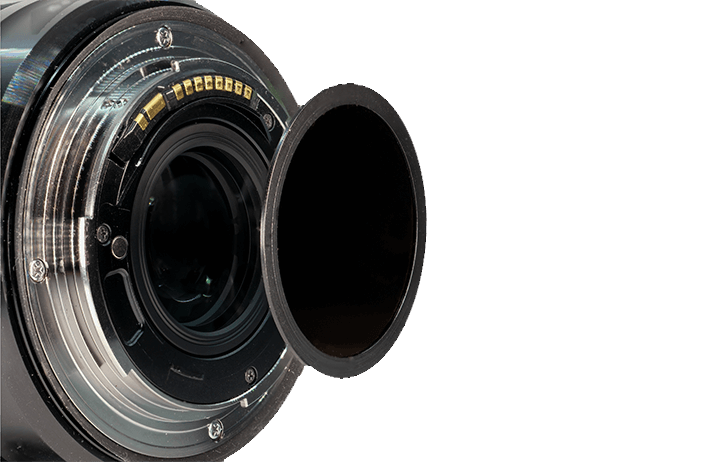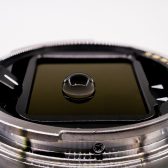Irvine, California, May 15th, 2020 – Aurora Aperture Inc. today has introduced a next-generation rear mount filter system.
The new next-generation rear mount filter system supports the Canon 11-24mm F4L USM and other select Canon wide-angle lenses, Nikon AF-S 14-24mm f/2.8G, Sigma 14-24mm F2.8 DG HSM Art EF mount and Sigma 14mm F1.8 DG HSM Art EF mount, Sigma 14-24mm F2.8 DG DN Art E and L mount, and Sony 12-24mm F4 G.
“In 2017 we introduced a rear mount filter system for the Canon EF 11-24mm F4L USM: The Aurora Aperture CR format, an industry-first rear mount glass filter,” said Jeff Chen, founder, and CEO of Aurora Aperture Inc. “The next generation rear mount filter system is a major upgrade from the CR format filter system. It expands supported lenses to several other popular ultra-wide-angle lenses, at the same time adds more filter choices. More importantly, the new system features a robust magnetic quick-release mechanism. ”
Next Generation Rear Mount Filter System
The next generation rear mount filter system improves usability by using an innovative magnetic mounting system. A filter is installed to a supported lens simply by attaching the filter onto the magnetized adapter on the rear of the lens. The magnetic quick release feature greatly simplifies the filter installation, especially for photographers working in harsh outdoor environments.
Designed in California, the Aurora Aperture next generation rear mount filter system provides a simple and elegant solution for ultra-wide-angle lenses that lack a front filter thread. Users would normally have to use either low-quality gel filters in the rear of the lens or otherwise use a massive front mount filter with sizes up to 186mm mounted onto a bulky adapter.
The Aurora Aperture next generation rear mount filters are very compact and lightweight, making them much easier to carry. The filters are made from high-quality Schott D 263® T eco thin glass* with multi-layer nano-coatings for their light reduction capability, resulting in accurate color rendition and minimizing field curvature. These filters can meet the high-resolution demands of 4k/8k video, and the high pixel density of modern-day sensors.
A PFPE based nano-coating is applied to both optical surfaces, ensuring the protection of filters against water, oil, dust, and dirt. This coating allows filters to be cleaned as substances do not adhere to the filter easily and are removed with little effort. The PFPE based nano coating has a 110-degree static contact angle, one of the best in the industry.
The filter glass is protected by a high strength stainless steel frame. The filter frame makes the filter easier to handle and adds protection to the filter glass. Aerospace-grade 7051 aluminum alloy is used for the filter adapter. This material is practically twice as strong as the 6000 series aluminum alloy used in conventional lens filters.
Available Filters
- PowerND™, neutral density (ND) filters of light reduction strength in:
- ND4 (2 stops)
- ND16 (4 stops)
- ND64 (6 stops)
- ND256 (8 stops)
- ND4000 (12 stops)
- PowerGND™, soft graduated neutral density (GND) filters of light reduction strength in:
- ND3 (1.5 stops)
- ND6 (2.5 stops)
- ND12 (3.5 stops)
- PowerDusk™, a light pollution reduction filter for astrophotography and for cityscape photography in blue hours by reducing artificial light pollution.
Supported Lenses
- Canon EF Rear Mount
- EF 8-15mm f/4L Fisheye USM
- EF 11-24mm F4L USM
- EF 14mm f/2.8L USM & EF 14mm f/2.8L USM II
- EF 15mm f/2.8 Fisheye
- EF 16-35mm f/2.8L USM (EF 16-35mm f/2.8L II USM not supported)
- EF 17-35mm f/2.8L USM
- EF 17-40mm f/4L USM
- Nikon AF-S 14-24mm f/2.8G ED
- Sigma EF Rear Mount
- Sigma 14-24mm F2.8 DG HSM Art
- Sigma 14mm F1.8 DG HSM Art
- Sigma 14-24mm F2.8 DG DN Art
- Sony E mount
- L mount
- Sony FE 12-24mm F4 G
Availability and Pricing
The Aurora Aperture next generation rear mount filters will be available through a Kickstarter crowdfunding campaign starting in May 2020. The general public and dealer availability is expected in September 2020. The price of filters will start from $43 and goes up to $113 per filter, depending on the type of filter. The price of lens adapters will be $35 to $41, depending on the supported lenses.
* except the PowerDusk™ (LPR) filter which is made with Neodymium based glass. https://www.aurora-aperture.com






Not the 16-35 f/2.8 III and not the f/4.0 :( ?!
And also not the Sigma 12-24 f/4.0?
But I love the idea! Would be perfect if this would fit on each lense tho!
Why not Canon ES 16-35/4? That lens already has a 77mm filter thread and most users already have a set of 77mm filters. So I assume that the market for that lens is simply too small.
Light pollution filter? That will be a Neodymium/Redhancer/Clear night/... filter in this case. They only work against sodium vapour light (which are more and more replaced by LED), they also reduce some other parts of the spectrum without light pollution and they double the exposure time. Removal of light pollution for astro is best done in post processing and the effect of this filter for normal night photography can also be emulated in post processing. Keep your money for something useful!
I can understand the idea behind it, but when I want to make serious nature photog with WA/UWA lenses my most important filter would be a graduated ND where I can decide the level of the horizon by shifting it in my filter holder. Try to do so with a rear mount filter system :rolleyes:
Luckily they don't offer a CPL for it. That would have made it bonkers :ROFLMAO: